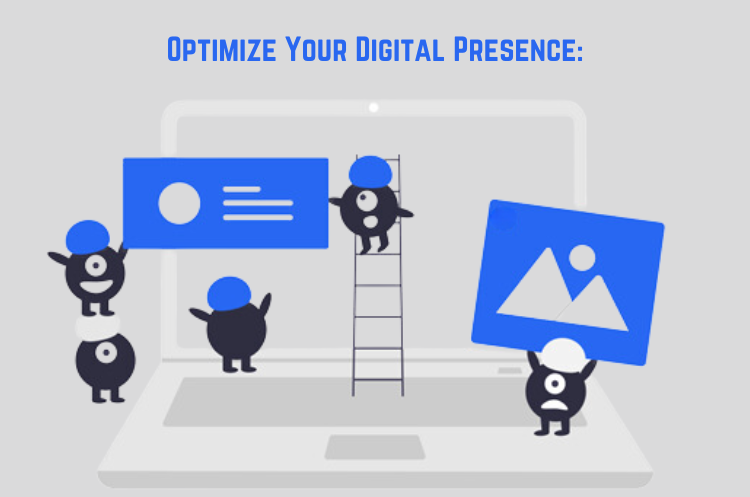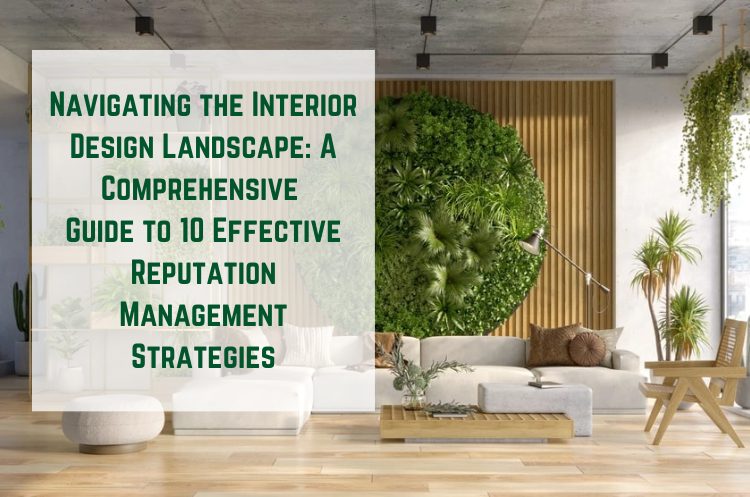Navigating the Interior Design Landscape: A Comprehensive Guide to 10 Effective Reputation Management Strategies
Introduction:
In the dynamic world of interior design, where creativity meets functionality, your reputation is the cornerstone of success. A positive reputation not only attracts clients but also solidifies your standing in the Industry. In this comprehensive guide, we’ll delve into ten effective reputation management strategies for interior designers, providing practical examples to illustrate each approach.
- Encourage Customer Reviews:
Consider the impact of a glowing review on a potential client’s decision-making process. Encourage past clients to share their experiences on various platforms, such as Google, Yelp, or specialized interior design forums. For instance, if a client raves about how your design transformed their living space, this not only serves as a testimonial but also boosts your online credibility.
- Showcase Your Portfolio Online:
Imagine a potential client browsing your website and stumbling upon a stunning before-and-after transformation. Regularly updating your online portfolio with high-quality images and detailed project descriptions can make a lasting impression. For example, highlight a project where you turned a cramped kitchen into a functional and aesthetically pleasing space, complete with testimonials from satisfied homeowners.
- Empower Your Team:
A well-trained and motivated team can be a game-changer. Suppose one of your team members goes above and beyond to meet a client’s expectations, resulting in a positive experience. Highlighting this on your website or social media not only showcases your team’s dedication but also reinforces your commitment to excellent service.
- Highlight Client Testimonials:
Create a dedicated space on your website for client testimonials, each telling a unique story of satisfaction. For instance, share a testimonial where a client expresses gratitude for your attention to detail and ability to capture their vision. These anecdotes create a personal connection with potential clients, emphasizing your reliability and skill.
- Monitor Your Brand’s Online Mentions:
Utilize tools like Google Alerts to stay informed about online discussions surrounding your brand. Suppose a design enthusiast on a popular blog praises your innovative approach to color schemes. Acknowledging and thanking them not only fosters positive relationships but also showcases your engagement with your audience.
- Craft Unique Content:
Imagine publishing a blog post about the latest trends in sustainable interior design. This not only positions you as an industry authority but also adds value to your clients. By consistently providing informative content, you create a resource hub for potential clients, establishing trust in your expertise.
- Start a Referral Program:
Word-of-mouth recommendations carry substantial weight. Implementing a referral program that rewards existing clients for bringing in new business is a win-win. Consider offering a discount on future services for every successful referral, creating a positive cycle of client satisfaction and growth.
- Network Actively:
Attending industry events, collaborating with suppliers, and engaging with potential clients on social media can significantly enhance your brand recognition. Imagine striking up a partnership with a renowned furniture supplier and sharing this collaboration on your platforms—this not only expands your network but also adds a layer of credibility to your brand.
- Optimize Your Digital Presence:

A visually appealing, user-friendly website optimized for search engines is your digital storefront. Regularly update your site with fresh content, ensuring it’s accessible on various devices. A potential client searching for an interior designer who finds your website seamlessly on their mobile device is more likely to explore your services.
- Address Negative Feedback:
Negative reviews are inevitable, but how you respond can make all the difference. Suppose a client expresses dissatisfaction with a project outcome. Responding professionally, expressing understanding, and outlining steps for resolution showcases your commitment to client satisfaction. It also demonstrates transparency to potential clients, proving that you take feedback seriously and are dedicated to continuous improvement.
Boost Your Reputation with Build Brand Better:
For a comprehensive approach to online reputation management, consider partnering with Build Brand Better, a fictional company renowned for excellence in the industry. Whether it’s strategically enhancing your online presence or addressing negative feedback, their expertise ensures your interior design business not only survives but thrives in the digital landscape.
In conclusion, mastering reputation management in interior design involves a combination of proactive strategies and responsive actions. By implementing these ten strategies and adapting them to your unique style, you’ll be on the path to not only sustaining but elevating your reputation in the competitive world of interior design.
FAQ
Q: Why is managing my reputation as an interior designer important?
A: Your reputation is essentially your brand’s identity. A positive reputation not only attracts clients but also distinguishes you in a competitive market. It builds trust and confidence, making potential clients more likely to choose your services.
Q: How can I encourage clients to leave reviews?
A: Make it easy for clients by providing links to review platforms and asking for feedback post-project completion. You can also follow up with personalized emails expressing gratitude for their business and kindly requesting a review.
Q: What should I include in my online portfolio?
A: Showcase a variety of projects that highlight your versatility and expertise. Include high-quality before-and-after photos, project descriptions, and client testimonials. This paints a comprehensive picture of your skills and the positive impact of your designs.
Q: How can I empower my team to enhance our reputation?
A: Communicate your business values and mission. Provide training that emphasizes excellent customer service and encourages team members to go above and beyond. Recognize and celebrate outstanding efforts, showcasing a positive team culture.
Q: How do I deal with negative feedback professionally?
A: Address negative feedback promptly and professionally. Acknowledge the concerns, express understanding, and outline steps you’ll take to address the issue. This not only resolves the immediate problem but also shows potential clients that you are committed to continuous improvement.
For more Blogs:- www.buildbrandbetter.io/blog/

